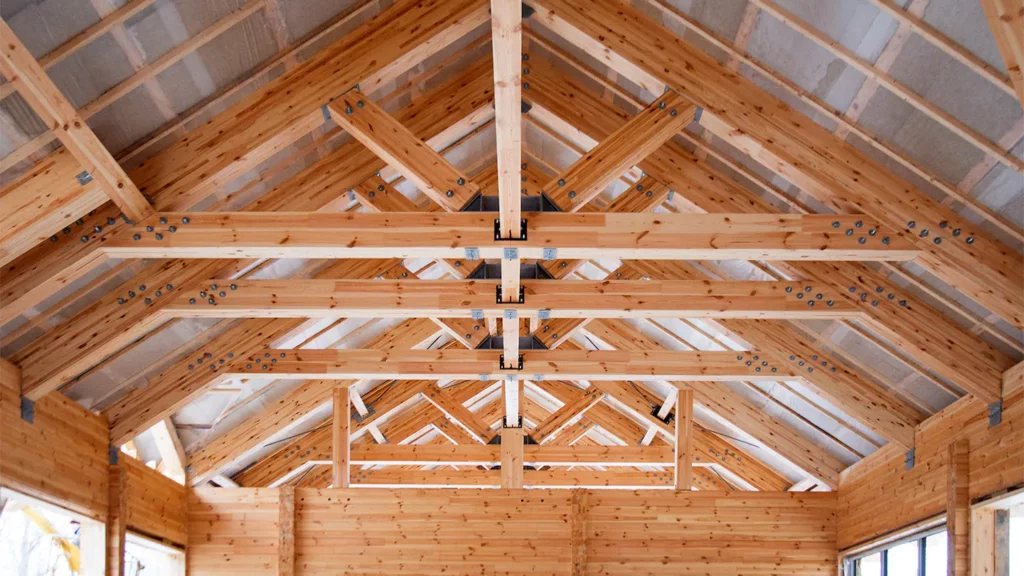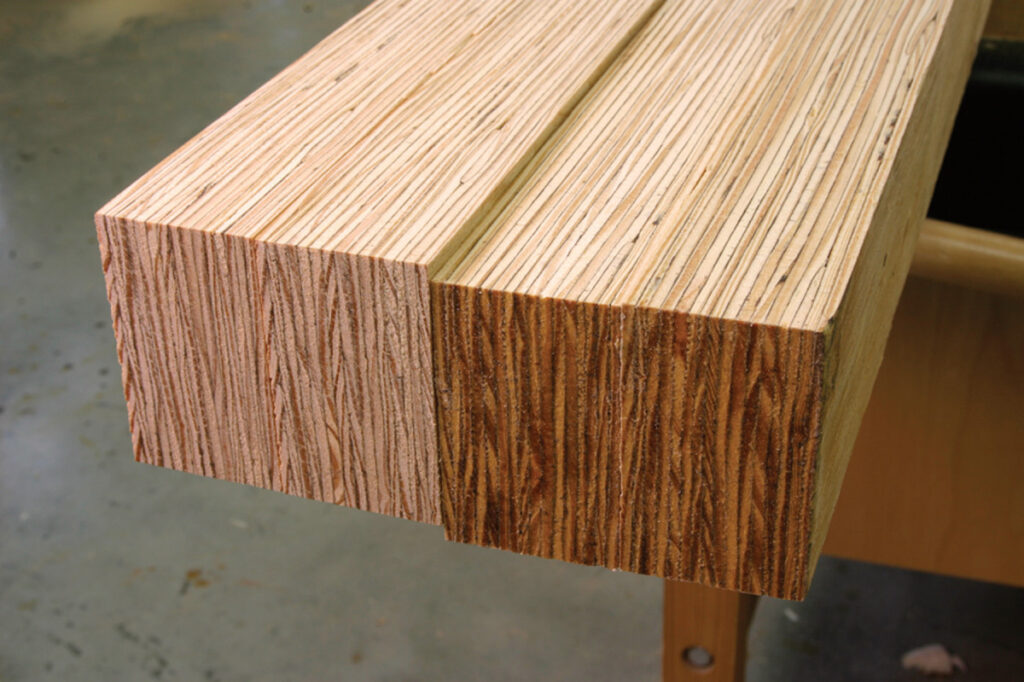Wood has been a popular choice for construction for centuries, but with advancements in technology and manufacturing processes, a new contender has emerged: Laminated Veneer Lumber (LVL) beams. In this article, we will delve into the characteristics, manufacturing process, cost analysis, and applications of LVL beams and traditional timber, in order to determine which option is better suited for different construction needs.
Understanding LVL Beams and Traditional Timber
Before we compare LVL beams to traditional timber, it is important to understand what each term entails.
When it comes to construction materials, the choice between LVL beams and traditional timber can significantly impact the structural integrity and overall aesthetics of a building. Both options have their own set of advantages and considerations that need to be taken into account during the planning stages of a project.
Defining LVL Beams
LVL beams are engineered wood products created by layering thin wood veneers and bonding them together with adhesive. This process enhances the strength and durability of the final product, making LVL beams an appealing option for construction projects.
One of the key benefits of LVL beams is their uniformity and consistency in terms of strength and size. This predictability allows for more precise calculations and designs, reducing the margin of error during construction. Additionally, LVL beams are less prone to warping, twisting, or shrinking compared to traditional timber, ensuring long-term stability in the structure.

What is Traditional Timber?
Traditional timber refers to solid wood beams that are obtained from natural sources and have been used in construction for centuries. The timber can be obtained from different tree species, such as pine, oak, or spruce, each with its own unique properties.
One of the defining characteristics of traditional timber is its natural aesthetic appeal. The grain patterns, knots, and color variations in solid wood beams add a touch of warmth and character to a space, making it a popular choice for architectural features where visual appeal is a priority. However, traditional timber may require more maintenance over time to prevent issues such as rot, insect infestation, and decay, especially in humid or damp environments.
The Manufacturing Process of LVL Beams and Traditional Timber
The manufacturing processes for LVL beams and traditional timber are quite different.
When it comes to LVL beams, the process is a fascinating blend of technology and nature. The journey begins with carefully selected logs that are debarked to reveal the raw material underneath. These logs are then sliced into thin veneers, each one a testament to the strength and flexibility of wood fibers. The veneers undergo a meticulous drying process to ensure optimal moisture content, a crucial step in guaranteeing the stability and longevity of the final product.
How LVL Beams are Made
Creating LVL beams involves several steps. First, the logs are debarked and cut into thin veneers. These veneers are then dried and arranged in a parallel fashion. They are bonded together using a strong adhesive and pressed under high pressure to form a solid and sturdy LVL beam.
Once the veneers are prepared, they are skillfully layered and bonded together using a specially formulated adhesive. This adhesive not only binds the veneers but also ensures uniform strength and performance across the entire beam. The layers are then stacked and pressed under immense pressure, a process that transforms individual veneers into a unified, high-performance LVL beam ready to support structures with strength and reliability.
The Creation of Traditional Timber
In contrast, traditional timber beams follow a more straightforward path from forest to construction site. Trees selected for their quality and dimensions are felled and transported to sawmills, where they undergo precision cutting to achieve the desired shapes and sizes. This traditional method of timber production relies on the natural characteristics of wood, harnessing its inherent strength and beauty to create structural elements that have stood the test of time.
Once the timber beams are cut to size, they may undergo treatment processes to enhance their durability and longevity. Treatments such as pressure impregnation with preservatives or coatings can help protect the timber from environmental factors like moisture, insects, and decay, ensuring that the beams remain strong and sturdy for years to come. Read more about treatment on http://medtrain.chm.msu.edu/ebm/Treatment/Treatment1.html
Key Characteristics of LVL Beams and Traditional Timber
When comparing LVL beams to traditional timber, several key characteristics come into play.
Understanding the nuances of these materials can greatly impact the success of a construction project.
Strength and Durability
LVL beams are engineered to provide consistent strength throughout the entire length. The bonding process and layering of veneers ensure that LVL beams have high load-bearing capacity and resistance to warping, shrinking, and splitting. This makes them ideal for supporting heavy loads in various structural applications. On the other hand, traditional timber, while possessing a natural charm and warmth, may exhibit variations in strength and durability depending on the tree species and quality of the wood. This variability can sometimes lead to challenges in ensuring uniform structural integrity.
Architects and builders often weigh these factors carefully when selecting the most suitable material for a project, considering not only the immediate needs but also the long-term performance and maintenance requirements.
Flexibility and Versatility
LVL beams offer greater flexibility and versatility in construction. They can be manufactured to specific dimensions and easily cut or shaped on-site, allowing for precise customization to meet project requirements. This adaptability is particularly advantageous in modern architectural designs that demand innovative solutions and intricate detailing. In contrast, traditional timber beams may have limitations in terms of available sizes and require more labor-intensive shaping processes, which can impact project timelines and costs.
By embracing the flexibility of LVL beams, architects and builders can explore new design possibilities and push the boundaries of creativity in construction projects.
Environmental Impact
Considering environmental factors is crucial in modern construction. LVL beams are often made from sustainably sourced wood, with manufacturers adhering to strict guidelines to ensure responsible forestry practices. The manufacturing process of LVL beams also minimizes waste, making them a more eco-friendly option for environmentally conscious projects. Traditional timber, when sourced responsibly from well-managed forests, can also be environmentally friendly. However, the industry must remain vigilant against clear-cutting and unsustainable logging practices that can have a detrimental impact on forests and ecosystems, emphasizing the importance of sustainable sourcing and forest management.
As the construction industry continues to evolve, the emphasis on sustainability and environmental stewardship will play an increasingly significant role in material selection and project execution.
Cost Analysis: LVL Beams vs Traditional Timber
Cost is a significant factor in construction projects, and it is worth comparing the expenses associated with LVL beams and traditional timber.
When it comes to choosing between LVL beams and traditional timber for your construction project, there are several factors to consider beyond just the initial purchase and installation costs. One important aspect to think about is the environmental impact of your choice. LVL beams are often considered more sustainable than traditional timber because they are made from fast-growing trees and utilize more of the tree in the manufacturing process, reducing waste. This eco-friendly aspect may be a deciding factor for environmentally conscious builders and clients. Click here to read more about manufacturing.
Initial Purchase and Installation Costs
LVL beams tend to be costlier than traditional timber due to the manufacturing process involved. The machinery, adhesive, and production techniques contribute to the increased initial cost. On the other hand, traditional timber is often more readily available and can be cheaper to purchase and install.
Another factor to consider is the structural performance of LVL beams compared to traditional timber. LVL beams are known for their consistent strength and reliability, making them a popular choice for projects that require high load-bearing capacity. Traditional timber, while versatile, may have more variability in strength depending on the quality and type of wood used. This difference in structural performance could impact the overall cost-effectiveness of your choice in the long run.

Long-Term Maintenance Costs
While the initial costs of traditional timber may be lower, it is important to consider long-term maintenance expenses. Traditional timber may require regular treatments, such as staining or sealing, to maintain its durability and aesthetic appeal. LVL beams, with their superior dimensional stability and resistance to moisture, may require less maintenance and therefore incur lower long-term costs.
Additionally, the lifespan of LVL beams compared to traditional timber is another aspect to take into account when evaluating the overall cost. LVL beams are engineered for durability and longevity, potentially outlasting traditional timber in terms of structural integrity and performance. This extended lifespan could result in savings on replacement and maintenance costs over the years, making LVL beams a cost-effective choice in the long term.
Applications of LVL Beams and Traditional Timber in Construction
Both LVL beams and traditional timber find applications in various construction projects. Laminated veneer lumber (LVL) beams are engineered wood products that offer high strength and dimensional stability, making them ideal for structural applications. On the other hand, traditional timber, known for its natural beauty and versatility, has been a staple in construction for centuries.
When it comes to choosing between LVL beams and traditional timber, factors such as load-bearing requirements, cost, and design aesthetics play a crucial role in decision-making.
Residential Construction
LVL beams are commonly used in residential construction for floor joists, headers, and beams, providing stability and support. Their uniformity and strength make them a popular choice for modern home construction. Traditional timber, with its rustic charm and sustainability, is also widely used for framing, decking, and interior finishes, giving homes a classic and natural aesthetic.
Many homeowners appreciate the warmth and character that traditional timber brings to their living spaces. From exposed wooden beams to hardwood floors, the use of timber in residential construction adds a touch of elegance and timelessness to any home.
Commercial Construction
In commercial construction, LVL beams are often employed for high-load applications, such as beams and columns in large-span structures. Their ability to handle heavy loads and resist warping makes them suitable for demanding commercial projects. Traditional timber, on the other hand, can be utilized for structural elements, facades, and interior finishes, adding warmth and character to commercial buildings.
Architects and designers often incorporate traditional timber elements in commercial spaces to create a welcoming and inviting atmosphere. From timber-clad exteriors to exposed wooden trusses, the use of timber in commercial construction can enhance the overall aesthetic appeal of a building and create a unique identity for the space.
Conclusion
Ultimately, the choice between LVL beams and traditional timber depends on specific construction requirements, budget considerations, and environmental concerns. LVL beams excel in terms of strength, durability, and flexibility, making them an attractive option for many applications. Traditional timber continues to be popular for its natural beauty and lower upfront costs. Careful evaluation of the needs and priorities of each project will determine which option is better suited. Regardless of the choice made, both LVL beams and traditional timber have distinct advantages and contribute to the ever-evolving field of construction.
Read about price of lvl formework at: Best LVL Formwork Suppliers for Quality and Affordability
